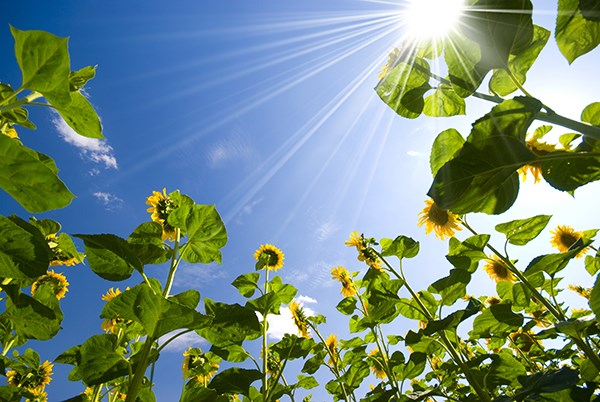It’s official: We are having a heat wave. The endless days of sunny dry weather are beautiful and slightly alarming. Whether this is just an extreme patch of weather for Squamish or the new normal, we need to learn how to take care of plants.
Watering restrictions are in place, so check with the District of Squamish website at squamish.ca to find your allotted times and days. Part of the trick to dealing with extreme heat is knowing what to water and when. Overwatering can kill or weaken plants with kindness, so water smartly and not frequently
Intense days of heat dry the surface of the soil quickly and dehydrate shallow rooted plants. Water in the morning; this is most effective in providing for a deep soaking and will help prevent sun scald on leaves. Water deeply so that the root balls of the plants are saturated
The most effective ways of watering are hand watering and using soaker hoses. Both of these methods allow for the water to penetrate the soil deeply with little waste. Using an overhead sprinkler wastes a lot of water. Wind blows the water away from its intended spot, and evaporation is also a problem.
Once you get the hang of smart and effective irrigation, you can try using mulch to top-dress your beds and help conserve water. The classic mulch is bark mulch, but you can use straw, old leaves, newspaper and even dried-out grass clippings. Don’t work the mulch into the soil; let it sit on top and cover the soil’s surface to protect from drying.
Mature plants will probably fare the best in hot, dry weather because they have established root systems and have been acclimatized to their current positions. New plantings, seedlings and transplants are going to have a tougher time in the heat. In a perfect world you might want to avoid transplanting and putting out new plants, but if not, there are a few tricks you can try. For new plants, thoroughly saturate the plant in its pot and fully soak the hole you dig to plant. You can try digging in some coconut coir or peat to help increase the soil’s ability to hold moisture. Try installing your new plants later in the day once the sun has gone down and the soil temperature has cooled down.
Seedlings and transplants have young root systems which are more susceptible to wind and drought. Site them next to taller, more mature plants already in the garden. The taller counterparts will provide protection and shade until the tiny transplants develop strong roots and grow well on their own.
Certain plants need more attention and more water than others. Any plant grown in containers, window boxes or small pots will dry out quicker than plants situated in established garden beds. These will need to be watered frequently depending on the size of the pot. You can try moving them to shady areas during intense heat waves or putting a tray at the bottom to help hold water in and retain moisture
Here’s hoping for a little rain in our future.



